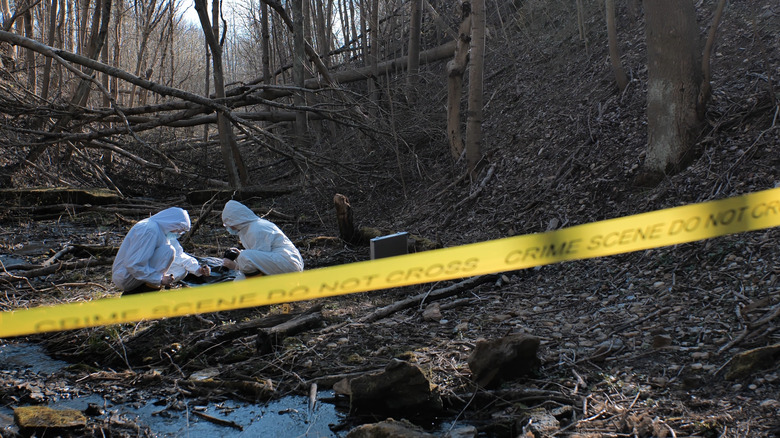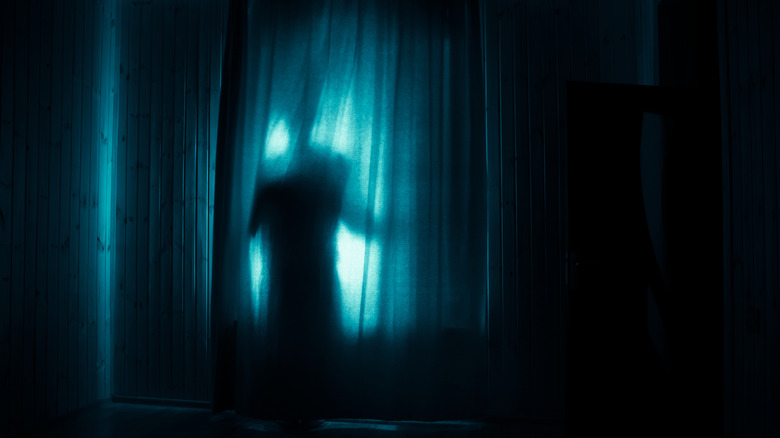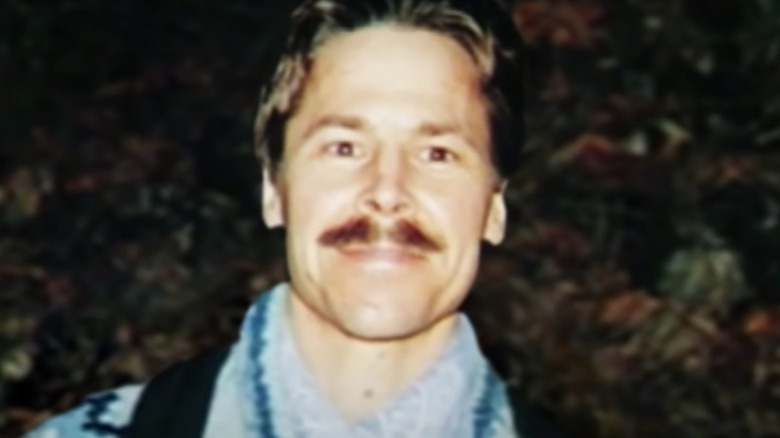The Mysterious Death Of David Chase Explained
David Chase, 42, worked as a cabinetmaker in the small town of Evergreen, Colorado. On the night of June 6, 1995, Chase went out drinking with a friend of his, one Matthew Orahoske. At the end of the night they drove home in Orahoske's truck. According to a story in the Daily Sentinel, Chase told Orahoske, without explanation, "I'll see you in Morrison." No sooner had he uttered that inscrutable sentence than Chase opened the truck door and threw himself out, into the shallow, frigid waters of Bear Creek.
That, at least, is what Orahoske told the police, when a decomposing body that washed up in Bear Creek was identified as Chase's. It was a strange story, to say the least. Chase's widow told Unsolved Mysteries, "I found this completely bewildering. I mean, my husband was a very experienced mountain climber, and had studied hypothermia, and knew full well the dangers of jumping into a snow-fed river. So the story was absolutely completely impossible for me to believe."
Ghost stories
Here is where the story turns from disquieting to fantastic. According to Unsolved Mysteries, a private detective named Phil Harris claimed to have been awakened from sleep around 4 a.m., about three months after David Chase's disappearance, by a disembodied voice. The voice was Chase's. According to the ghost's story, Chase and Orahoske got into an argument the night of June 6. Chase had planned to buy a truck from his friend but changed his mind; Orahoske, who needed the cash, struck Chase, and soon the men were grappling. In their tussle, Orahoske struck Chase hard in the back of the head with some kind of blunt tool, killing him. He then dumped Chase's body in the river with the help of an unknown accomplice.
That, in any event, is Harris' account. The detective promptly looked up Chase's widow and took on the case, for the nominal fee of $1.
But was it foul play?
Whatever truth there may be in a second-hand ghost story, the details of the Chase disappearance didn't add up. First was the idea of Chase (above) jumping into an icy stream for no reason. Then, the coroner reported that although Chase showed signs of drowning, he showed no sign of intoxication; supposedly he had been drinking all evening. Orahoske's behavior, too, seemed bizarre. The place where Chase had allegedly jumped into the creek was only a few yards from the bar they had recently left, and a short sprint's distance from a fire station. The coroner noted that Chase's neck had been broken, and that he was missing his pants, although his shoes were still on; stranger, there were odd cuts all over his legs. Chase's widow told Unsolved Mysteries that her husband used to tuck his jeans into his socks, likely as a precaution against ticks. Were the jeans cut off of Chase's legs?
Faced with police questions, Orahoske would change his story. Now he said that Chase fell into the stream while unloading brushwood. It wouldn't matter: Harris died unexpectedly a year after he began his investigation. Orahoske was never formally charged with any crime related to Chase's disappearance. Until ghosts can testify in court, or any new witnesses make themselves known — perhaps the accomplice that Harris was convinced existed? — we'll never know what really happened.


